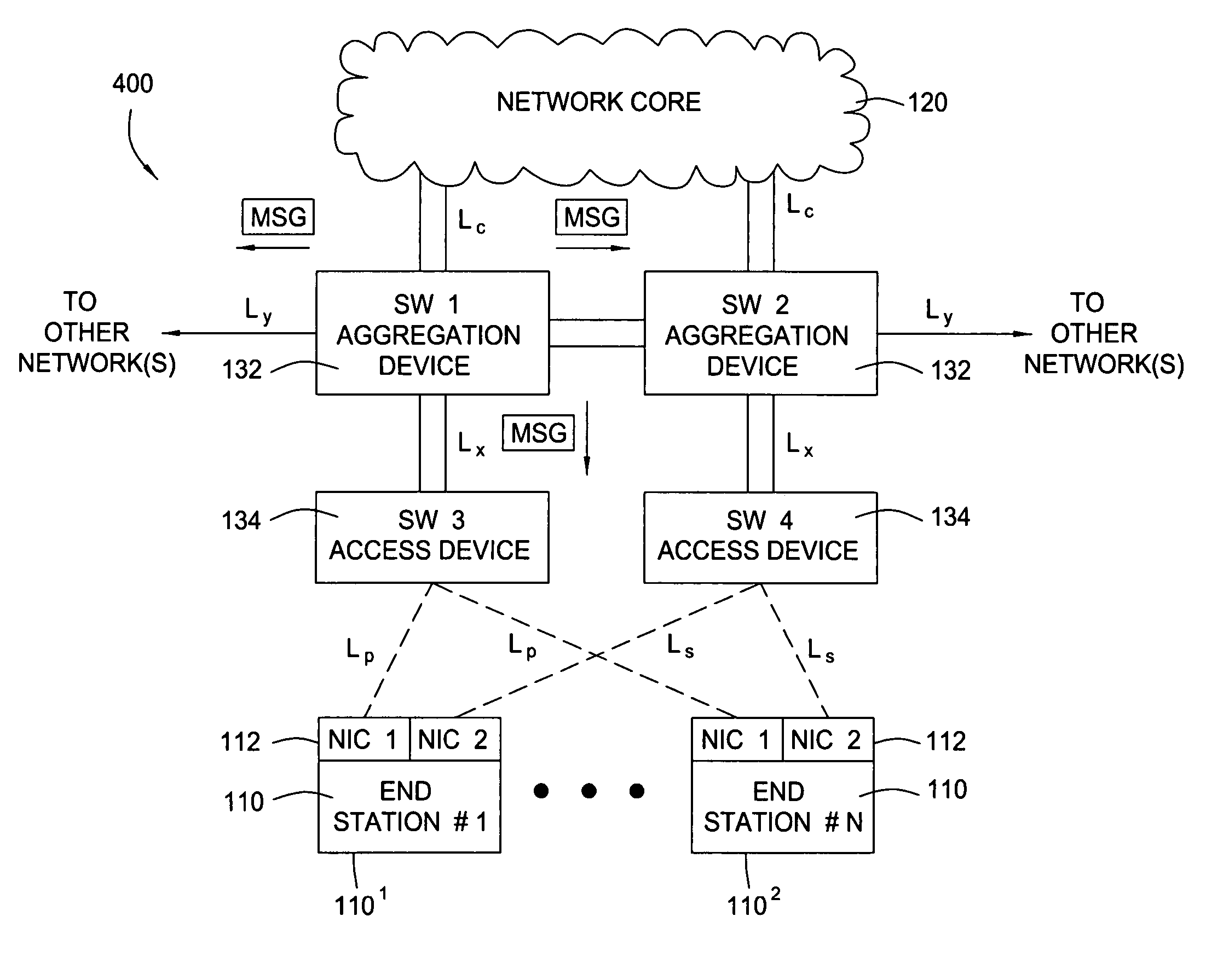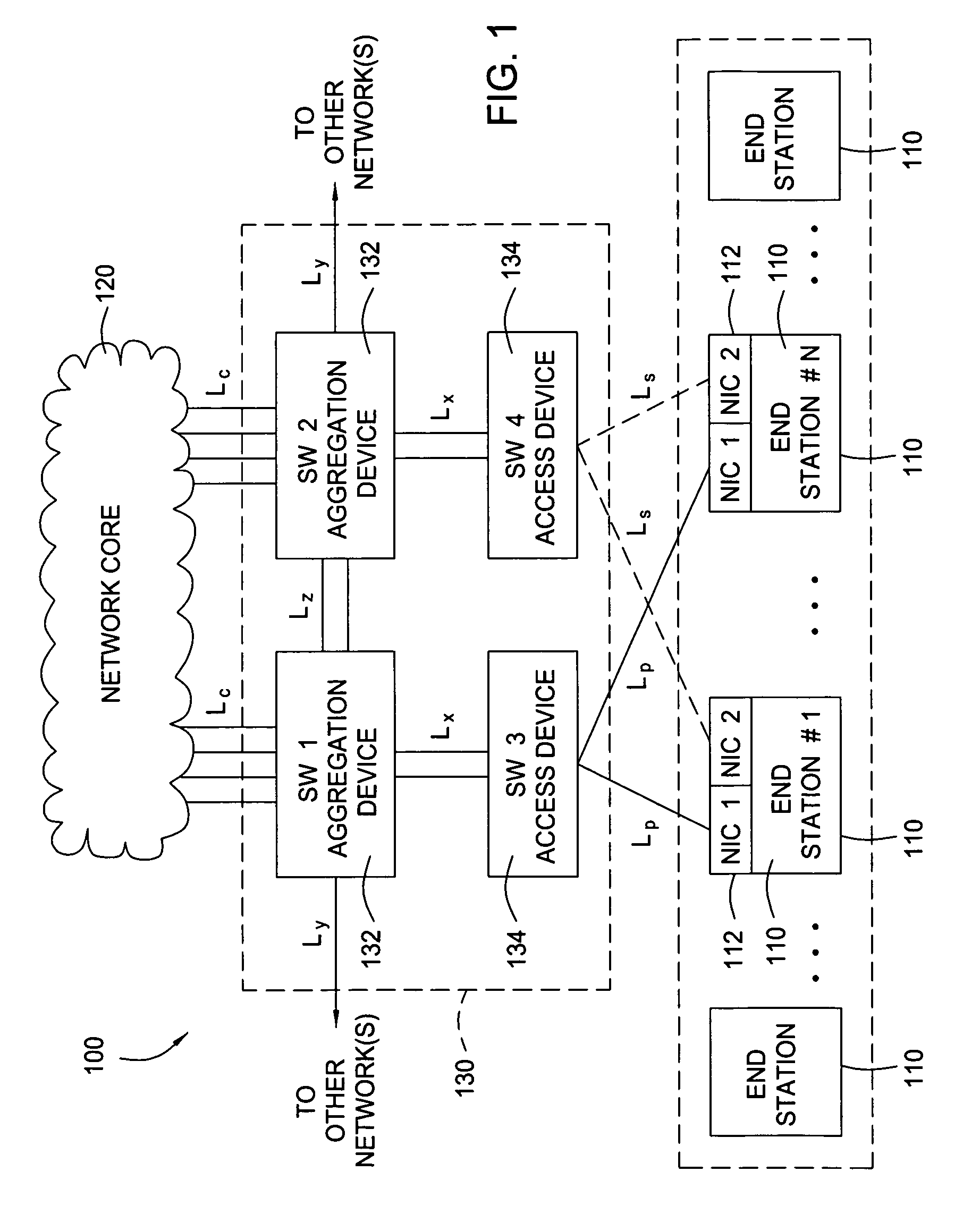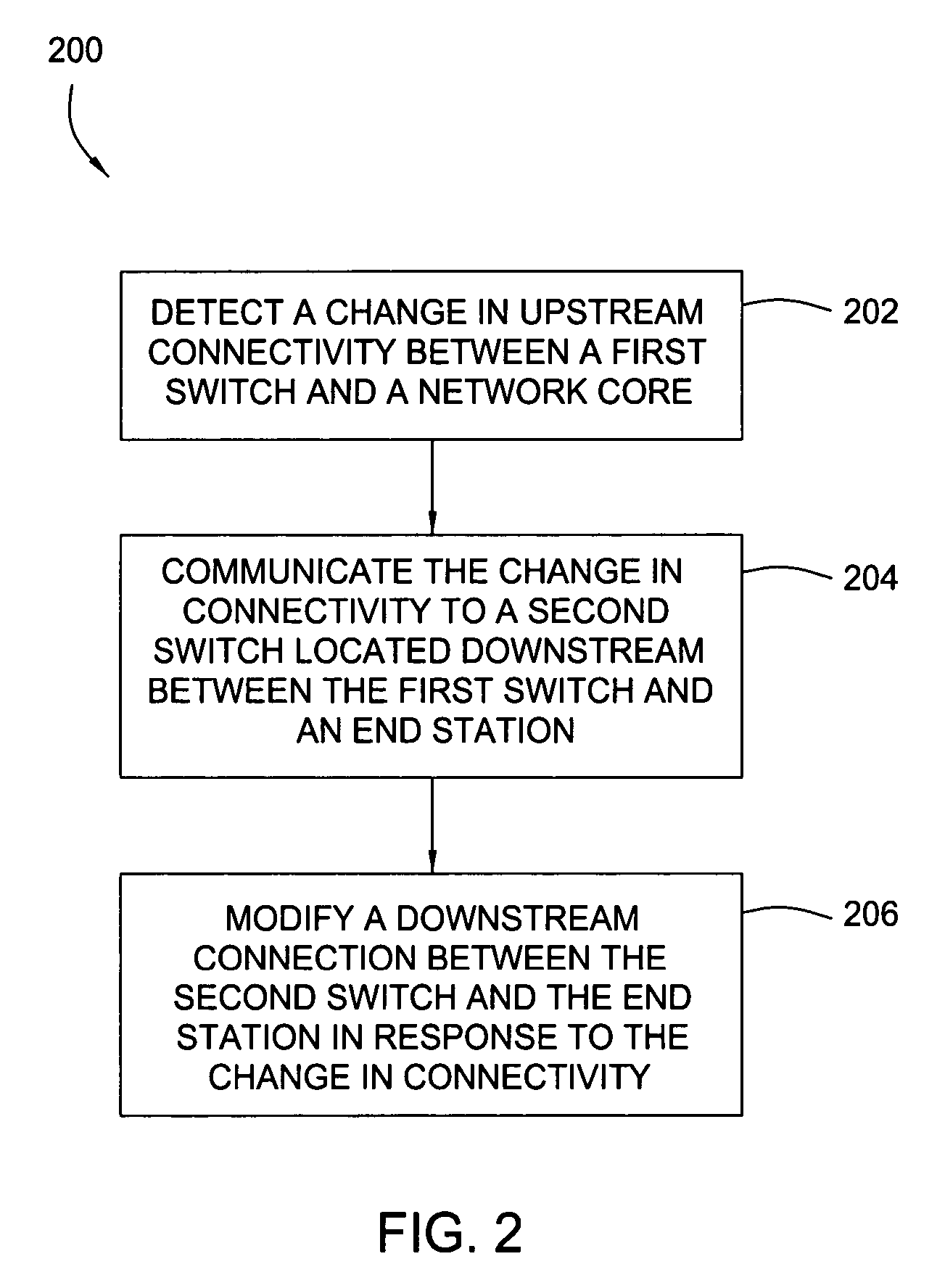System and methodology for fast link failover based on remote upstream failures
a remote upstream and failure technology, applied in the field of switching computer network management, can solve problems such as degrade network performan
- Summary
- Abstract
- Description
- Claims
- Application Information
AI Technical Summary
Benefits of technology
Problems solved by technology
Method used
Image
Examples
Embodiment Construction
[0021]Embodiments of the present invention generally provide methods and apparatus for propagating changes in upstream connectivity downstream. For some embodiments, an upstream switch connected to a network core may detect a change in connectivity and, in response, send a message indicating the change to a downstream switch connected to an end station. In response to the message, the downstream switch may disable a link with end station. Disabling the link may cause the end station to promptly switch (fail over) to a different link, in an effort to establish an alternate path to the network. Further, by maintaining the link between the intermediate or downstream switch and the upstream device, network traffic routed through that switch need not be re-routed and the link can continue to carry traffic destined for other networks.
[0022]Methods and apparatus for managing a multilayer switching path are described. In the following description, numerous specific details are set forth in ...
PUM
 Login to View More
Login to View More Abstract
Description
Claims
Application Information
 Login to View More
Login to View More - R&D
- Intellectual Property
- Life Sciences
- Materials
- Tech Scout
- Unparalleled Data Quality
- Higher Quality Content
- 60% Fewer Hallucinations
Browse by: Latest US Patents, China's latest patents, Technical Efficacy Thesaurus, Application Domain, Technology Topic, Popular Technical Reports.
© 2025 PatSnap. All rights reserved.Legal|Privacy policy|Modern Slavery Act Transparency Statement|Sitemap|About US| Contact US: help@patsnap.com



